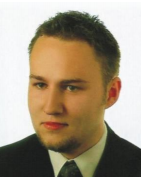Krzysztof Jakub Sośnica (2013)

The IAG Young Authors Award 2013 is presented to Krzysztof Jakub Sośnica for his paper “Impact of loading displacements on SLR-derived parameters and on the consistency between GNSS and SLR results” written together with the co-authors and advisors Daniela Thaller, Rolf Dach, Adrian Jäggi, and Gerhard Beutler.
The work was published in the Journal of Geodesy, 2013, volume 87, Issue 8, pp. 751-769. The article studies the impact of Ocean Tidal Loading (OTL), Atmospheric Tidal Loading (ATL), and Atmospheric Non-Tidal Loading (ANTL) on 12 years of Satellite Laser Ranging (SLR) data.
The international scientific community currently recommends applying OTL and ATL corrections at the observation level for IERS products, but not the ANTL corrections. The article shows, however, that the application of ANTL on the observation level does not only positively impact the long-term stability of the estimated station coordinates, but the quality of Earth Rotation Parameters, satellite orbits, and geocenter coordinates, as well.
ANTL corrections play in particular a crucial role in the combination of optical (SLR) and microwave (GNSS, VLBI, DORIS) observations because of the so-called BlueSky effect: SLR measurements require a cloudless sky, typically associated with high air pressure, which deforms the Earth's crust. Microwave observations, on the other hand, are weather-independent and therefore continuously available. The omission of ANTL corrections in the analysis of space geodetic data therefore leads to inconsistencies between SLR and GNSS solutions, up to 2.5 mm for inland stations. The application of ANTL corrections on the observation level does not only improve the stability of SLR solutions, but reduces the discrepancies between GNSS and SLR solutions due to the Blue-Sky effect, as well, which is confirmed by about 10% improvement of the estimated GNSS-SLR coordinate differences with respect to local tie vectors measured on ground at the co-located GNSS-SLR sites. These results indicate how to further improve the consistency between different space geodetic techniques. They are important in the context of GGOS, striving for a 1 mm accuracy and a 0.1 mm/y stability for the next generation of terrestrial reference frames.
Krzysztof Sośnica studied geodesy at the Wroclaw University of Environmental and Life Sciences from 2004 to 2009, when he graduated with a thesis on filtering airborne laser scanning data with wavelet algorithms. After additional IT studies in Wroclaw he joined the satellite geodesy research group at the Astronomical Institute of the University of Bern (AIUB). His research was devoted to the analysis of SLR data with the focus on Earth Rotation Parameters, on temporal variations of the Earth’s gravity field, and on the improvement of the terrestrial reference frame. In 2014 he completed his work in Bern with a Ph.D. thesis entitled “Determination of Precise Satellite Orbits and Geodetic Parameters using Satellite Laser Ranging”. After one year as a research associate at the AIUB he returned to Wroclaw University in spring 2015.